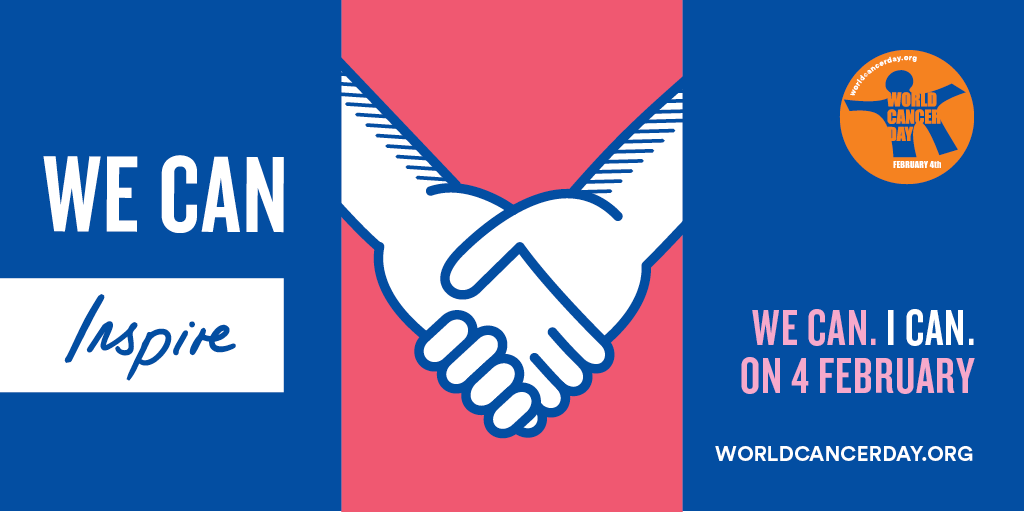World Cancer Day is the one singular initiative under which the entireworld can unite together in the fight against the global cancer epidemic.
World Cancer Day
World Cancer Day is part of the World Cancer Campaign, which responds to the Charter of Paris adopted at the World Summit Against Cancer for the New Millennium on February 4, 2000. It called for a strong alliance between researchers, health-care professionals, patients, governments, industry partners and the media to fight cancer.
A truly global event taking place every year on 4 February, World Cancer Day unites the world’s population in the fight against cancer.
It aims to save millions of preventable deaths each year by raising awareness and education about the disease, pressing governments and individuals across the world to take action.

Taking place under the tagline ‘We can. I can.’, World Cancer Day 2016-2018 will explore how everyone – as a collective or as individuals – can do their part to reduce the global burden of cancer.
Just as cancer affects everyone in different ways, all people have the power to take various actions to reduce the impact that cancer has on individuals, families and communities.
World Cancer Day is a chance to reflect on what you can do, make a pledge and take action. Whatever you choose to do ‘We can. I can.’ make a difference to the fight against cancer.
 |
| Gorkhapatra |
Cancer is a generic term for a large group of diseases that can affect any part of the body. Other terms used are malignant tumours and neoplasms. One defining feature of cancer is the rapid creation of abnormal cells that grow beyond their usual boundaries, and which can then invade adjoining parts of the body and spread to other organs. Cancer is one of the leading causes of death in the world, particularly in developing countries. In the WHO Western Pacific Region, it is estimated that close to 4.07 million new cases occurred in 2008 (2.31 million in men and 1.75 million in women). Almost 2.6 million people in the Region died from cancer that same year.
Key facts (October 2011, WHO)
Modifying and avoiding risk factorsMore than 30% of cancer could be prevented by modifying or avoiding key risk factors, including:
- Cancer is a leading cause of death worldwide: it accounted for 7.6 million deaths (around 13% of all deaths) in 2008.
- Lung, stomach, liver, colon and breast cancer cause the most cancer deaths each year.
- The most frequent types of cancer differ between men and women.
- About 30% of cancer deaths are due to the five leading behavioral and dietary risks: high body mass index, low fruit and vegetable intake, physical inactivity, tobacco use, alcohol use. All these cancers are often preventable.
- Infectious agents are responsible for almost 22% of cancer deaths in the developing world and 6% in industrialized countries.
- Tobacco use is the single largest preventable cause of cancer in the world causing 22% of cancer deaths. About 70% of the lung cancer burden can be attributed to smoking alone.
- Cancer arises from a change in one single cell. The change may be started by external agents or inherited genetic factors.
- About 70% of all cancer deaths in 2008 occurred in low- and middle-income countries.
- Deaths from cancer worldwide are projected to continue to rise to over 11 million in 2030.
- tobacco use
- being overweight or obese
- low fruit and vegetable intake
- lack of physical activity
- alcohol use
- Human papillomavirus and Hepatitis B infection
- urban air pollution
- indoor smoke from household use of solid fuels.
READ MORE